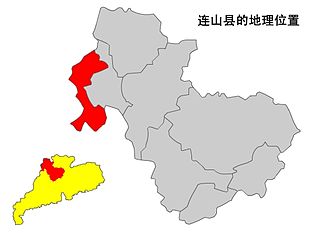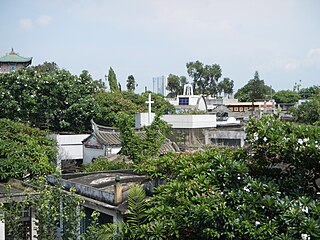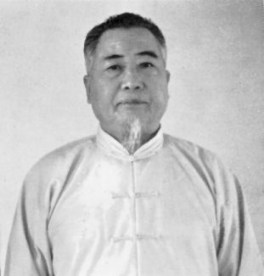
Wing Chun is a concept-based martial art, a form of Southern Chinese kung fu, and a close-quarters system of self-defense. It is a martial arts style characterized by its focus on close-quarters hand-to-hand combat, rapid-fire punches, and straightforward efficiency. It has a philosophy that emphasizes capturing and sticking to an opponent's centerline. This is accomplished using simultaneous attack and defense, tactile sensitivity, and using an opponent's force against them.
Mu ren zhuang or Mook Yan Jong, is a training tool used in various styles of Chinese martial arts, most notably that of Wing Chun and other kung fu styles of Southern China. Traditionally made from wood, the dummies are now also made from synthetic materials such as steel and plastic.

Hung Ga (洪家), Hung Kuen (洪拳), or Hung Ga Kuen (洪家拳) is a southern Chinese martial art belonging to the southern Shaolin styles. The hallmarks of Hung Ga are strong stances, notably the horse stance, or "si ping ma" (四平馬), and strong hand techniques, notably the bridge hand and the versatile tiger claw. Traditionally, students spent anywhere from several months to three years in stance training, often sitting only in horse stance from half an hour to several hours at a time, before learning any forms. Each form could then take a year or so to learn, with weapons learned last. In current times, this mode of instruction is generally considered impractical for students, who have other concerns beyond practicing kung fu. However, some instructors still follow traditional guidelines and make stance training the majority of their beginner training. Hung Ga is sometimes mischaracterized as solely external—that is, reliant on brute physical force rather than the cultivation of qi—even though the student advances progressively toward an internal focus.

King Zhuang of Chu was a monarch of the Zhou dynasty State of Chu during the Spring and Autumn period in ancient China. His personal name was Xiong Lü, his ancestral name was Mi, and his posthumous title was King Zhuang. He was one of the five rulers dubbed the Five Hegemons by Xunzi and attempted to wrest control of China from King Ding of Zhou.

Nanquan refers to a classification of Chinese martial arts that originated in Southern China.
Nora Miao is a Hong Kong film actress. She is best known for appearing in many kung fu films in the 1970s, opposite Hong Kong action movie stars such as Bruce Lee and Jackie Chan.

Wushu, or kung fu, is a competitive Chinese martial art. It integrates concepts and forms from various traditional and modern Chinese martial arts, including Shaolin kung fu, tai chi, and Wudangquan. "Wushu" is the Chinese term for "martial arts", reflecting the art's goal as a compilation and standardization of various styles.

Lianshan Zhuang and Yao Autonomous County is located in northern Guangdong province, China, and is under the administration of Qingyuan prefecture-level city. It borders Hunan to the north and Guangxi to the west and has a large concentration of Zhuang and Yao peoples, for whom the autonomous country was created and named.

Jow Ga kung fu is a form of Chinese martial art. It was founded by Jow Lung who was born in 1891, on the eleventh day of the third lunar month in Sa Fu Village of the Guangdong province, and died in 1919. His father was Jow Fong Hoy and his mother’s maiden name was Li. At the time of its inception, this particular style of kung fu was labeled as having the head of Hung Gar, the tail of Choy Gar and the patterns of the tiger and leopard, or simply Hung Tao Choy Mei. It was so labeled because the essential techniques incorporated the muscular and mighty movements of Hung Gar and the swift footwork and complex kicking of Choy Gar, making it a very effective form of self defense with emphasis on simultaneous attack and defense.

Tung Kong Chow Gar Tong Long, or simply Chow Gar (周家), is a southern Chinese martial art of the Hakka (客家) people. It is one of the four major schools of Southern Praying Mantis, the other schools being Chu Gar, Kwong Sai Jook Lum, and Tit Ngau. It is an aggressive style of kung fu with an emphasis on close-range fighting. These skills are developed by utilizing a range of training techniques that have been developed over several centuries.

The Manila Chinese Cemetery is the second oldest cemetery in Manila after La Loma Cemetery. The cemetery includes Christian, Buddhist and Taoist burials. The present-day cemetery is a vaguely trapezoidal area of about 54 hectares with an irregular network of roads its old pre-war part along Rizal Avenue Extension, reflecting its gradual evolution and expansion. Meanwhile, the post-war portion has three major roads bisected by minor roads, aligned NW to SE. Matandang Sora, coming from the main entrance in Felix Huertas going towards Chong Hock Temple, is the main road today. Before the Pacific War the main entrances faced Avenida Rizal. This northwestern is the oldest and most historically significant part of the cemetery. The cemetery was witness to many executions during World War II. Among them were Girl Scouts organizer Josefa Llanes Escoda, Filipino Brigadier General and hero during World War II and Boy Scouts of the Philippines charter member Vicente Lim, literary geniuses Rafael Roces and Manuel Arguilla, star athlete-turned-guerrilla spy Virgilio Lobregat, and Chinese Consul General Yang Guangsheng. Apolinario Mabini was also buried in the cemetery before his remains were transferred to Batangas on July 23, 1956.

Chang Dsu Yao was a teacher of the martial arts Meihuaquan and tai chi.

Doumen District is a district of Zhuhai, Guangdong Province, China. Doumen town is the home of the Zhaozhen Museum, named after U.S. Army Colonel, John C. Young, whose father was born near there.

Jinwan District is a district of Zhuhai, Guangdong province, China.

A gun or bang is a long Chinese staff weapon used in Chinese martial arts. It is known as one of the four major weapons, along with the qiang (spear), dao (sabre), and the jian. It is called, in this group, "The Grandfather of all Weapons". In Vietnam, the gun is known as côn in Vietnamese martial arts.
The Table of Indexing Chinese Character Components is a lexicographic tool used to order the Chinese characters in mainland China. The specification is also known as GF 0011-2009.
The Dark Tales is a series of Hong Kong television period supernatural dramas that originally aired on Jade from 18 March 1996 to 1 May 1998, consisting of two installments with 75 episodes. Based on Qing Dynasty writer Pu Songling's series of supernatural tales called Strange Stories from a Chinese Studio, Dark Tales is produced by TVB and stars a cast of mainly Hong Kong and Taiwanese actors.

Eight Hundred Heroes is a 1976 Taiwanese historical war drama film directed by Ting Shan-hsi about the Defense of Sihang Warehouse in 1937 Shanghai, China. The film was selected as the Taiwanese entry for the Best Foreign Language Film at the 49th Academy Awards, but was not accepted as a nominee.

Chu Shong-tin was grand master of Wing Chun kung fu who had lived in Hong Kong. He was the third student of the famous teacher Yip Man, and remained at Yip Man's school to become his senior instructor.
















